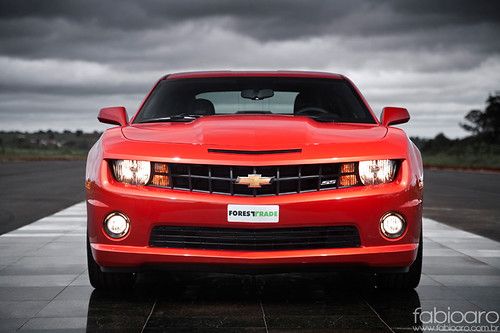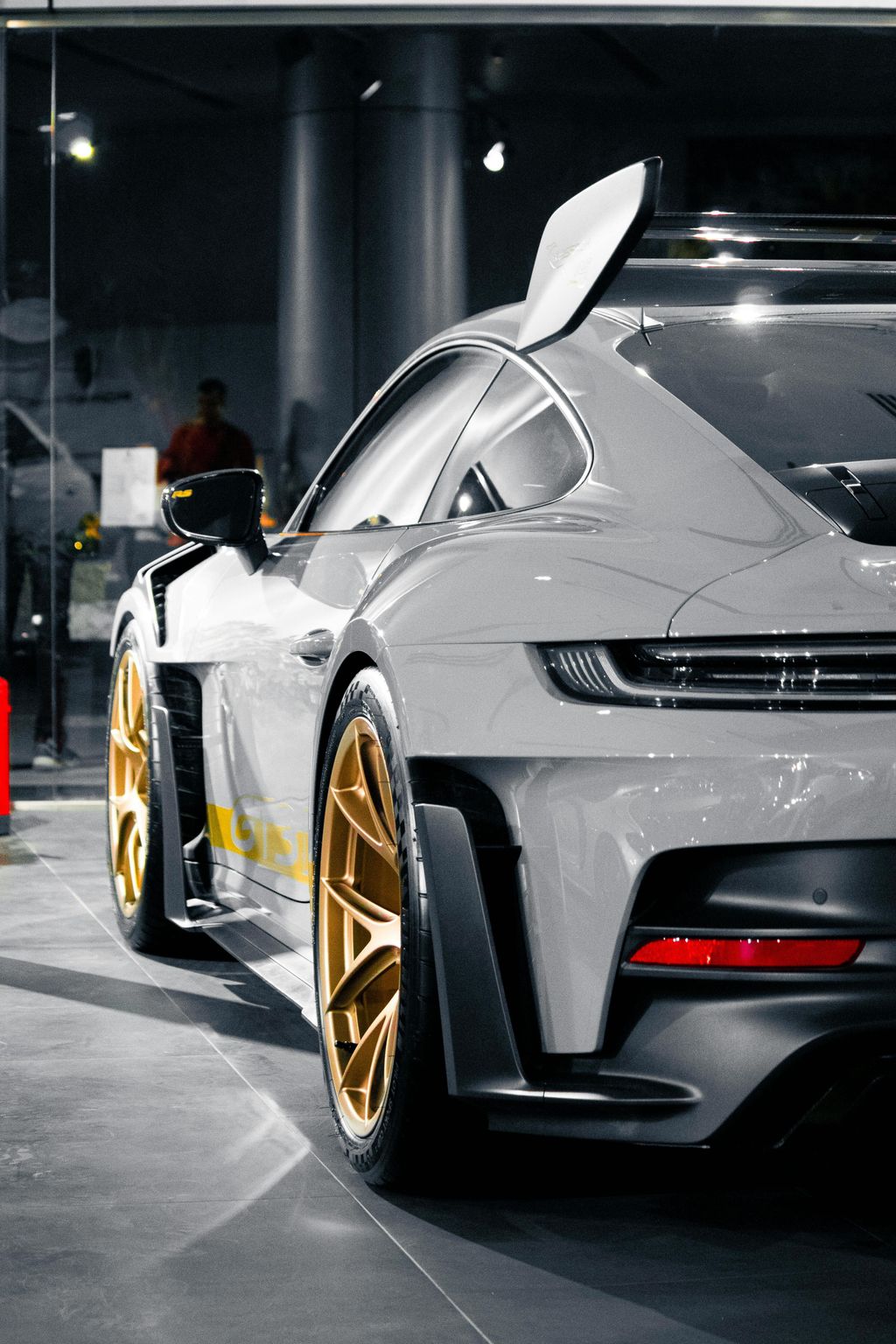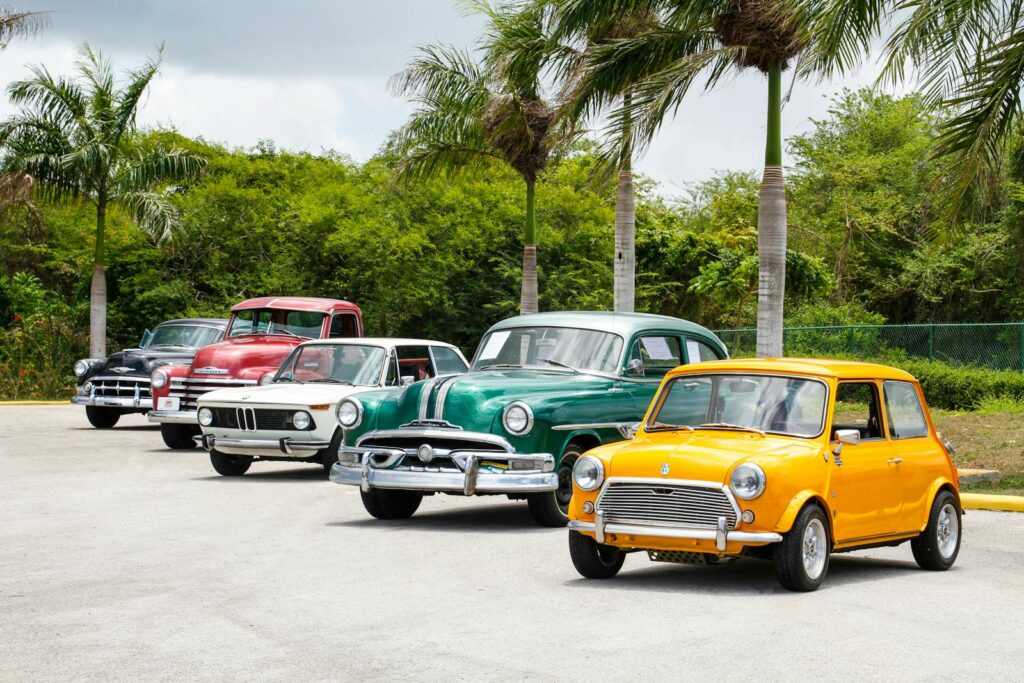
The automotive landscape has always been a reflection of its times, capturing the prevailing tastes, technological advancements, and societal values of each era. Yet, as generations succeed one another, what was once considered the epitome of cool or a symbol of status can, with time, become entirely unappealing to a new demographic. This phenomenon is particularly evident when comparing the classic cars cherished by the Baby Boomer generation with the vehicles that capture the interest of Millennials.
There exists a distinct and often stark generational gap in what constitutes a desirable ride, extending beyond mere aesthetics to encompass deeply rooted values concerning performance, practicality, safety, and environmental impact. While Boomers might recall these vehicles with a warm sense of nostalgia, often tied to personal memories or the cultural zeitgeist of their youth, younger generations tend to view them through a different lens, one shaped by modern expectations and evolving priorities.
This in-depth exploration will take a closer look at a selection of these vintage automobiles, uncovering the fundamental reasons why these once-revered icons, despite their historical significance and cultural impact, frequently get overlooked by younger folk. We will analyze the specific attributes that made them popular among Boomers, juxtaposing these with the critiques and disinterests expressed by Millennials, thereby illuminating the complex interplay of heritage and contemporary relevance in the world of classic cars.
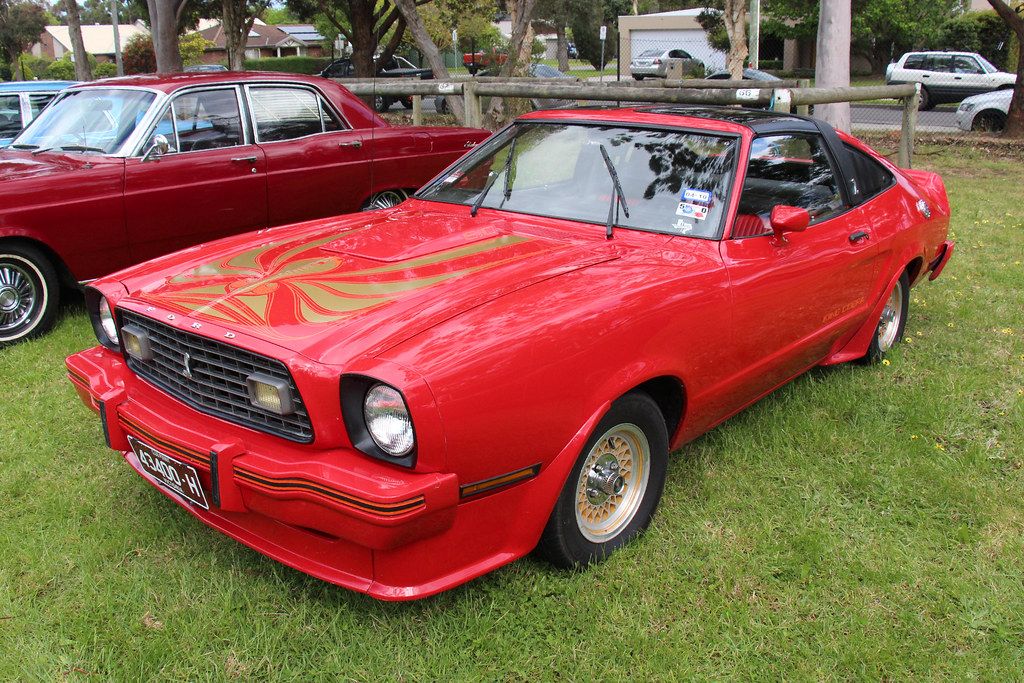
1. **Ford Mustang II**For many Baby Boomers, the Ford Mustang II holds a unique, albeit complicated, place in their hearts. Introduced during the fuel crisis, it was seen as a continuation of the beloved Mustang lineage, an attempt by Ford to adapt its iconic pony car to the pressing economic realities of the time. This blend of practicality and continued heritage likely contributes to its sentimental appeal for older generations.
However, the Millennial perspective on the Mustang II often diverges sharply from this nostalgic view. Younger enthusiasts are quick to criticize it for what they perceive as a significant departure from the Mustang’s original, more powerful roots. They often point to its underwhelming performance and bland, uninspired design, especially when compared to its muscle car predecessors. This criticism highlights a preference for raw power and distinctive styling that the Mustang II, with its focus on economy, simply couldn’t deliver.
The car’s design, intended to be compact and fuel-efficient, often strikes Millennials as an aesthetic misstep rather than an ingenious adaptation. The shift towards smaller, more practical vehicles during its production may have been a necessity, but for a generation raised on later, more potent iterations of performance cars, the compromises made for the Mustang II are often seen as unforgivable. It becomes a symbol of a perceived weakening, not clever design, for many younger eyes.
Car Model Information: 2024 Honda Civic Sport
Name: Second generation
Caption: Ford Mustang II coupe
Aka: Ford Mustang II , Ford T5 (in Germany)
Class: Pony car,Subcompact car
Production: 1973–1978
ModelYears: 1974–1978
Predecessor: Ford Mustang (first generation)
Successor: Ford Mustang (third generation)
Assembly: Unbulleted list
Layout: Front-engine, rear-wheel-drive layout
BodyStyle: coupé,hatchback
Related: Ford Pinto,Ford Pinto
Manufacturer: Ford Motor Company
Engine: ubl
Transmission: ubl
Wheelbase: cvt
Length: cvt
Width: cvt
Height: cvt
Designer: Buck Mook, Dick Nesbitt
Categories: All articles with dead external links, All articles with unsourced statements, Articles with dead external links from April 2024, Articles with permanently dead external links, Articles with short description
Summary: The second-generation Ford Mustang, marketed as the Ford Mustang II, is a two- or three-door, four-passenger, front-engine/rear-drive pony car manufactured and marketed by Ford from 1973 until 1978. Introduced in September 1973 for the 1974 model year, the Mustang II arrived roughly coincident with the oil embargo of 1973 and subsequent fuel shortages. Developed under Lee Iacocca, it was an “entirely new kind of pony car.” Ford “decided to call it Mustang II, since it was a new type of pony car designed for an era of high gas prices and fuel shortages.”
The Mustang II was 490 lb (222 kg) lighter and almost 19 in (483 mm) shorter than the 1973 Mustang, and derived from the subcompact Pinto platform. While sharing a limited number of driveline components with the Pinto, the Mustang II employed an exclusive subframe, isolating its front suspension and engine mount subframe. The steering used a rack-and-pinion design.
Named Motor Trend’s 1974 Car of the Year and reaching over 1.1 million sales over four years of production, the Mustang II is noted simultaneously for both its marketing prescience and strong sales – while criticized as having abandoned essential aspects of the Mustang heritage and described, in a retrospective after 40 years since its introduction, as embodying the Malaise era.
Get more information about: Ford Mustang (second generation)
Buying a high-performing used car >>>
Brand: Ford Model: Mustang II
Price: $25,950 Mileage: 29,727 mi.
Read more about: Boomers Cherish These 15 Classic Cars, Yet Millennials Remain Unmoved: A Deep Dive into Generational Automotive Divides
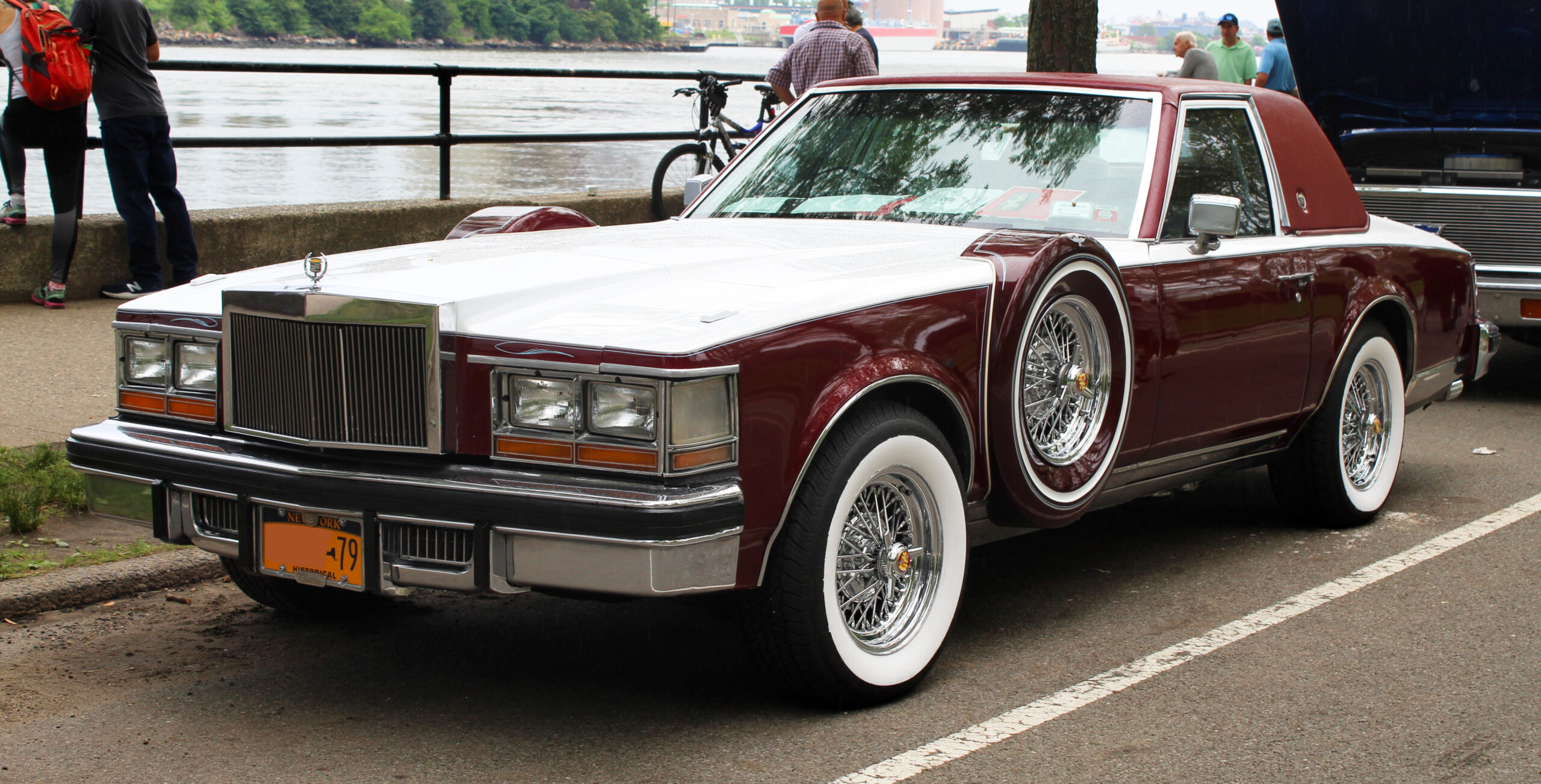
2. **Cadillac Seville**The Cadillac Seville, in its prime, was a hallmark of American luxury and sophistication, deeply embedded in the Boomer ideal of a premium sedan. Older generations fondly recall the Seville for its impressive comfort, stately presence, and a style that exuded confidence and success. It represented an era of American automotive design where size and opulence were synonymous with high status and superior engineering.
Conversely, Millennials often regard the Seville as an embodiment of the very excesses of past American automotive design they now critique. Its substantial body and notorious fuel inefficiency are major drawbacks, clashing directly with contemporary values that prioritize environmental responsibility and economic practicality. The sheer scale of the vehicle, once a sign of prestige, is now often viewed as cumbersome and out of touch.
This generational shift is not merely about styling preferences; it reflects a broader change in automotive philosophy. As the market moves towards smaller, more economical, and increasingly sustainable vehicles, models like the Cadillac Seville appear profoundly outdated. Its lavish consumption and grand dimensions, once celebrated, are now seen as impractical liabilities in a world increasingly concerned with resource conservation and urban maneuverability. The Seville thus symbolizes an era many Millennials prefer to leave in the past.
Car Model Information: 1999 Cadillac Seville Base
Name: Cadillac Seville
Caption: 1998–2004 Cadillac Seville
Manufacturer: Cadillac
Production: 1975–2003
ModelYears: 1976–2004
Class: luxury car
Layout: FR layout
Predecessor: Cadillac Calais
Successor: Cadillac STS
Categories: 1980s cars, 1990s cars, All articles with unsourced statements, Articles with short description, Articles with unsourced statements from October 2016
Summary: The Cadillac Seville is a mid-size luxury car manufactured by Cadillac from the 1976 to 2004 model years as a smaller-sized, premium model. It was replaced by the STS in 2004 for the 2005 model year.
Get more information about: Cadillac Seville
Buying a high-performing used car >>>
Brand: Cadillac Model: Seville
Price: $19,900 Mileage: 36,875 mi.
Read more about: Boomers Cherish These 15 Classic Cars, Yet Millennials Remain Unmoved: A Deep Dive into Generational Automotive Divides
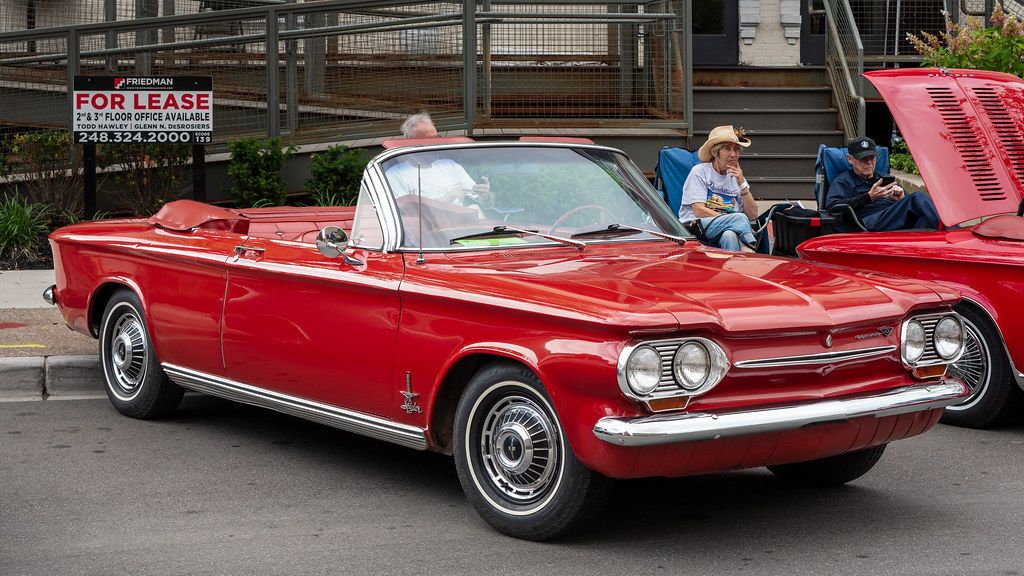
3. **Chevrolet Corvair**The Chevrolet Corvair represents a fascinating chapter in automotive history, captivating many Boomers with its groundbreaking approach to design and engineering. Its defining features—a rear-mounted, air-cooled engine and an innovative overall structure—were highly unusual for an American car of its time. This distinctive engineering set it apart, appealing to those who appreciated novel solutions and departures from conventional design.
However, for Millennials, the Corvair’s legacy is often overshadowed by significant safety and handling concerns that became widely publicized. Critics, most notably Ralph Nader, brought its alleged instability to the forefront, creating a lasting impression that transcends its original design intent. Younger enthusiasts frequently cite these historical criticisms, making the Corvair a less desirable classic due to perceived inherent flaws.
Despite its innovative spirit, the persistent narrative surrounding its safety issues has significantly impacted its desirability across generations. Millennials, who have grown up with advancements in automotive safety and stability control, are naturally wary of a vehicle associated with such controversies. Its innovative design, while historically interesting, cannot overcome the ingrained perception of fundamental handling and safety compromises.
Car Model Information: 1964 Chevrolet Corvair Monza
Caption: 1964 Chevrolet Corvair Monza
Name: Chevrolet Corvair
Manufacturer: Chevrolet
Production: 1960–1969
Platform: GM Z platform
Chassis: Unibody
ModelYears: 1960–1969
Assembly: United States,Kansas City, Missouri,Oakland, California,Van Nuys,St. Louis,Flint, Michigan,Belgium,Canada,Mexico,South Africa,Switzerland,Venezuela
Class: Compact car
Successor: Chevrolet Vega
Layout: Rear-engine, rear-wheel-drive layout
Categories: All Wikipedia articles written in American English, All articles lacking in-text citations, All articles needing additional references, All articles with dead external links, All articles with specifically marked weasel-worded phrases
Summary: The Chevrolet Corvair is a rear-engined, air-cooled compact car manufactured and marketed by Chevrolet over two generations between 1960 and 1969. The Corvair was a response to the increasing popularity of small, fuel-efficient automobiles, particularly the imported Volkswagen Beetle and the success of American-built compacts like the Rambler American and Studebaker Lark.
The first generation (1960–1964) was offered as a four-door sedan, two-door coupe, convertible, and four-door station wagon. A two- and four-door hardtop and a convertible were available second generation (1965–1969) variants. The Corvair platform was also offered as a subseries known as the Corvair 95 (1961–1965), which consisted of a passenger van, commercial van, and pickup truck variant. Total production was approximately 1.8 million vehicles from 1960 until 1969.
The name “Corvair” was first applied in 1954 to a Corvette-based concept with a hardtop fastback-styled roof, part of the Motorama traveling exhibition. When applied to the production models, the “air” part referenced the engine’s cooling system.
A prominent aspect of the Corvair’s legacy derives from controversy surrounding its handling, articulated aggressively by Ralph Nader’s Unsafe at Any Speed and tempered by a 1972 Texas A&M University safety commission report for the National Highway Traffic Safety Administration (NHTSA) which found that the 1960–1963 Corvair possessed no greater potential for loss of control in extreme situations than contemporary compacts.
To better counter popular inexpensive subcompact competitors, notably the Beetle and Japanese imports such as the Datsun 510, GM replaced the Corvair with the more conventional Chevrolet Vega in 1970.
Get more information about: Chevrolet Corvair
Buying a high-performing used car >>>
Brand: Chevrolet Model: Corvair
Price: $29,988 Mileage: 74,787 mi.
Read more about: Boomers Cherish These 15 Classic Cars, Yet Millennials Remain Unmoved: A Deep Dive into Generational Automotive Divides
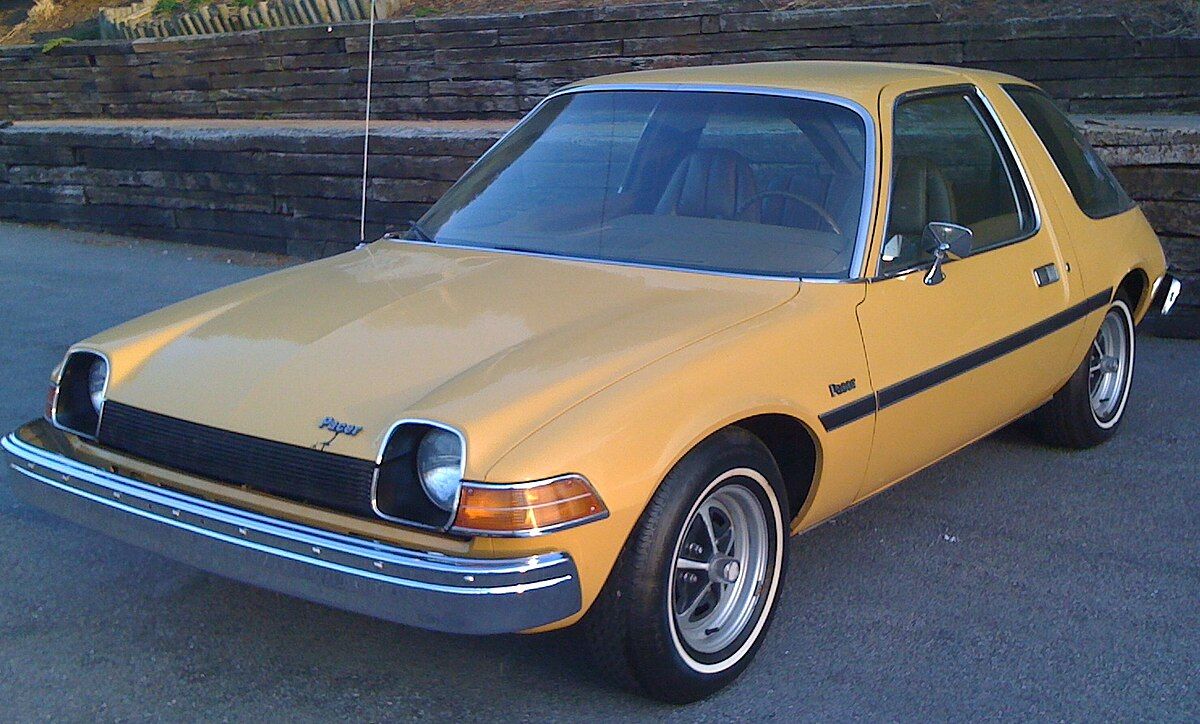
4. **AMC Pacer**When the AMC Pacer debuted, it was heralded as a truly innovative and unique vehicle, a bold attempt to redefine automotive styling. Its distinctive, bubble-like appearance and expansive glass area were touted by some Boomers as forward-thinking, a refreshing break from the conventional designs of the era. The Pacer’s ambition to stand out was, for a time, celebrated by those who valued experimental design.
Yet, this very uniqueness has become a source of ridicule for Millennials. Younger generations often find the Pacer’s shape to be oddly proportioned and aesthetically challenging, describing it as a “bubble car” in a dismissive tone. Beyond its polarizing looks, Millennials also criticize its perceived inefficiency, seeing its unconventional design as a misstep rather than a mark of genuine innovation. The attempt to break the mold is viewed, by many younger eyes, as a design flaw that never quite achieved its intended impact.
What was once an emblem of daring design has evolved into a symbol of automotive eccentricity that struggles to find a modern appreciation. The Pacer’s design choices, which aimed for novelty and visibility, now often come across as dated and impractical to a generation that values sleek lines and aerodynamic efficiency. Its historical context as an innovator is lost on those who simply see an unusual and, to them, unattractive vehicle.
Read more about: Boomers Cherish These 15 Classic Cars, Yet Millennials Remain Unmoved: A Deep Dive into Generational Automotive Divides
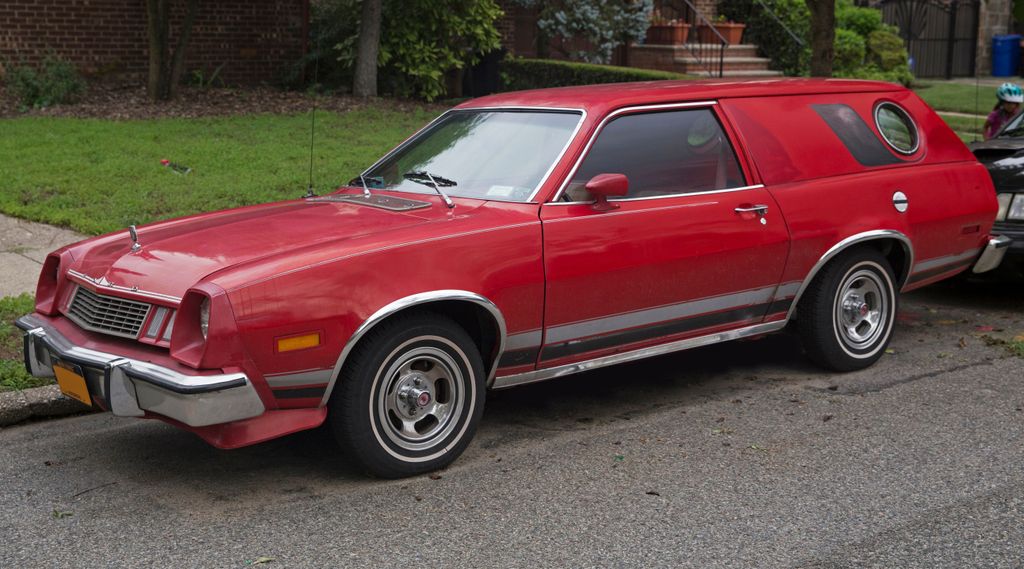
5. **Ford Pinto**The Ford Pinto, during its initial run in the 1970s, was widely recognized for its affordability and practicality, qualities that resonated strongly with many Boomers. It served as a cost-effective and efficient mode of transportation for countless families and individuals, embodying the pragmatic automotive needs of its era. For an older generation, it might evoke memories of early independence or economical family travel.
However, the Pinto’s legacy has been irrevocably tarnished by severe safety issues, particularly the notorious risk of its fuel tank rupturing and catching fire upon rear impact. This critical design flaw has embedded itself deeply into the collective consciousness, especially for Millennials who encounter the car primarily through this controversial narrative. They view the Pinto not as a practical compact, but as a dangerous vehicle with a perilous design.
Despite its original intentions and widespread popularity, the indelible mark of these safety concerns fundamentally alters its perception. Millennials, growing up in an era with heightened safety standards and consumer protection, find it difficult to overlook such a significant flaw. The car’s historical affordability is completely overshadowed by the grave implications of its design, making it a stark example of a vehicle whose reputation was permanently damaged by its safety record.
Car Model Information: 1978 Ford Pinto RUNABOUT HATCHBACK
Name: Ford Pinto
Caption: Ford Pinto
Manufacturer: Ford Motor Company
Aka: Mercury Bobcat
Production: September 1970 – July 1980
ModelYears: 1971–1980 (Pinto),1974–1980 (Bobcat)
Assembly: Edison, New Jersey,Milpitas, California
Designer: Robert Eidschun (1968)
Class: Subcompact car
BodyStyle: Sedan (automobile),sedan delivery,station wagon,hatchback
Related: #Mercury Bobcat (1974–1980),Ford Mustang (second generation)
Layout: Front-engine, rear-wheel-drive layout
Chassis: Unibody
Engine: unbulleted list
Abbr: on
Disp: Ford Cologne engine
Transmission: unbulleted list
Wheelbase: 94.0 in
Length: 163 in
Width: 69.4 in
Height: 50 in
Weight: convert
Predecessor: Ford Cortina#Mark II (1966–1970)
Successor: Ford Escort (North America)
Categories: 1980s cars, Articles with short description, Cars discontinued in 1980, Cars introduced in 1970, Commons category link from Wikidata
Summary: The Ford Pinto is a subcompact car that was manufactured and marketed by Ford Motor Company in North America from 1970 until 1980. The Pinto was the first subcompact vehicle produced by Ford in North America.
The Pinto was marketed in three body styles throughout its production: a two-door fastback sedan with a trunk, a three-door hatchback, and a two-door station wagon. Mercury offered rebadged versions of the Pinto as the Mercury Bobcat from 1975 until 1980 (1974–1980 in Canada). Over three million Pintos were produced over its ten-year production run, outproducing the combined totals of its domestic rivals, the Chevrolet Vega and the AMC Gremlin. The Pinto and Mercury Bobcat were produced at Edison Assembly in Edison, New Jersey, St. Thomas Assembly in Southwold, Ontario, and San Jose Assembly in Milpitas, California.
Since the 1970s, the safety reputation of the Pinto has generated controversy. Its fuel-tank design attracted both media and government scrutiny after several deadly fires occurred when the tanks ruptured in rear-end collisions. A subsequent analysis of the overall safety of the Pinto suggested it was comparable to other 1970s subcompact cars. The safety issues surrounding the Pinto and the subsequent response by Ford have been cited widely as business ethics and tort reform case studies.
Get more information about: Ford Pinto
Buying a high-performing used car >>>
Brand: Ford Model: Pinto
Price: $19,000 Mileage: 91,000 mi.
Read more about: Boomers Cherish These 15 Classic Cars, Yet Millennials Remain Unmoved: A Deep Dive into Generational Automotive Divides
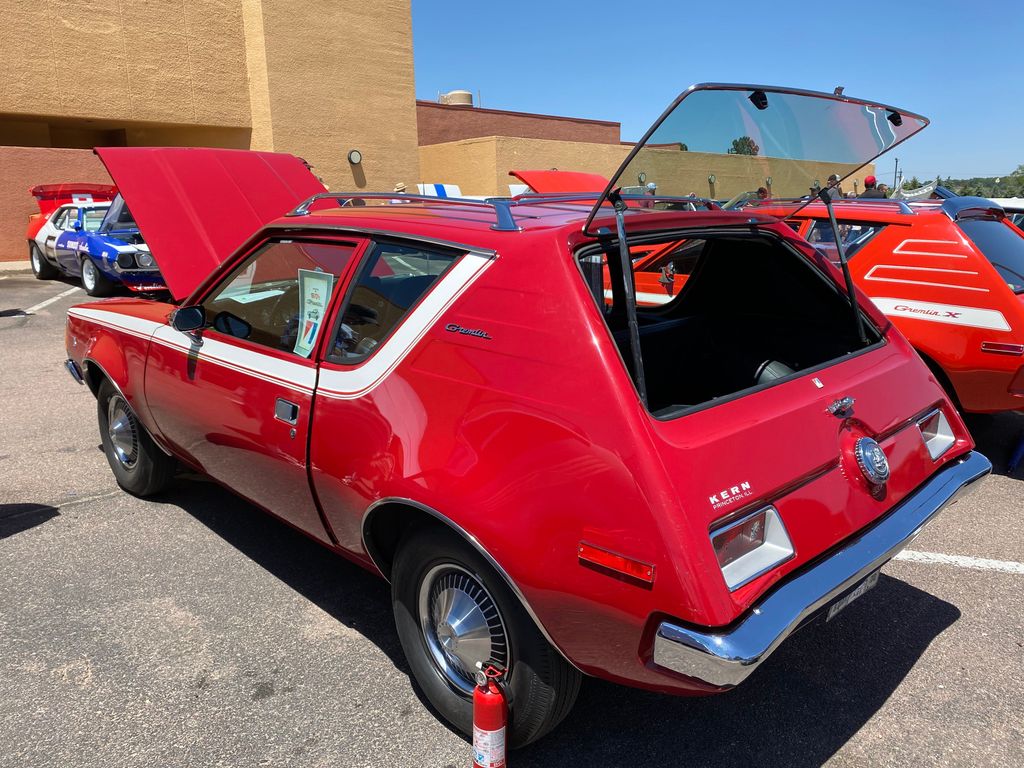
6. **AMC Gremlin**The AMC Gremlin is undeniably a car with a unique visual identity, and for many Boomers, this distinctiveness is precisely what lends it a sense of nostalgia. Its truncated rear end and bold styling, a genuine deviation from contemporary norms, can evoke fond memories of a time when automotive manufacturers were more willing to experiment with unusual aesthetics. It represents a quirky chapter in American car design.
Yet, this very distinctiveness is often a source of contention for Millennials. They tend to dislike the Gremlin for what they perceive as its unusual aesthetics, often finding its design rather awkward or even ugly. Beyond its polarizing looks, younger generations also frequently criticize its less-than-stellar performance metrics. The combination of an unconventional appearance and uninspiring driving dynamics makes it a difficult sell to those seeking more modern automotive experiences.
The Gremlin’s attempt at quirky design, while perhaps charming to some, has not translated well across the generational divide. For Millennials, who are often exposed to a broader global palette of car designs and higher performance benchmarks, the Gremlin represents an automotive oddity rather than a cherished classic. Its unique design, rather than being a point of admiration, becomes a barrier to its appreciation in the contemporary context.
Read more about: Boomers Cherish These 15 Classic Cars, Yet Millennials Remain Unmoved: A Deep Dive into Generational Automotive Divides
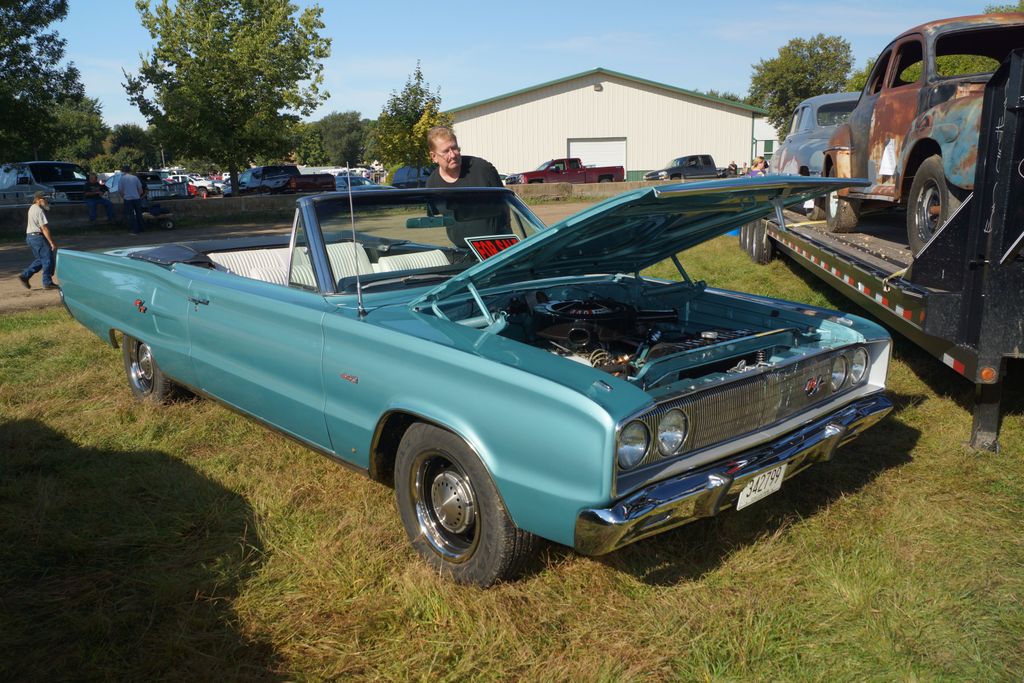
7. **Dodge Coronet**In its heyday, the Dodge Coronet was widely regarded as a solid, reliable family car, a dependable workhorse that met the needs of many Boomer households. It embodied the values of practicality and durability, offering a straightforward and unpretentious mode of transportation. For those who owned one, it was a car that simply got the job done, day in and day out, without fuss or extravagance.
However, Millennials often dismiss the Coronet for precisely some of these same characteristics, viewing them through a different cultural lens. Its plain design and large, often unwieldy, size appear significantly out of step with contemporary automotive values. Younger buyers today prioritize sleek aesthetics, efficient packaging, and a more dynamic driving experience, none of which the Coronet typically delivered in spades. The emphasis on sheer size and basic utility from a bygone era clashes with modern tastes.
This generational perspective highlights a fundamental shift in what is expected from a family vehicle. Where reliability and ample interior space once sufficed, there is now a strong demand for refined styling, advanced technology, and superior fuel economy. The Coronet, in its unadorned and substantial form, thus fails to capture the imagination of a generation that seeks a blend of style, efficiency, and modern convenience in their daily drivers.
The chasm between generations in automotive taste runs deep, extending beyond the initial seven examples to a broader array of vehicles that once defined an era. While Baby Boomers recall these cars as symbols of aspiration, freedom, or family utility, Millennials often perceive them through a lens of modern demands and evolving sensibilities. We continue our journey, examining seven additional classic vehicles that illustrate how once-revered luxury, sheer size, substantial fuel consumption, and demanding maintenance clash with today’s Millennial values, which increasingly prioritize practicality, environmental consciousness, and a contemporary driving experience.
Car Model Information: 1967 Dodge Coronet Restomod
Name: Dodge Coronet
Caption: 1967 Dodge Coronet R/T
Manufacturer: Dodge
Production: 1949–1959,1965–1976
Class: Full-size
Predecessor: Dodge Custom
Successor: Dodge Dart
Layout: FR layout
Categories: 1950s cars, 1970s cars, All articles with dead external links, All articles with unsourced statements, Articles with dead external links from June 2016
Summary: The Dodge Coronet is an automobile that was marketed by Dodge in seven generations, and shared nameplates with the same bodyshell with varying levels of equipment installed. Introduced as a full-size car in 1949, it was the division’s highest trim line and moved to the lowest level starting in 1955 through 1959. The name was reintroduced on intermediate-sized models from the 1965 until 1976 model years. Muscle car versions were available starting in 1965 with the 383 and 426 wedge cu in (7.0 L) Chrysler RB engine, followed in 1966 by the powerful 426 cu in (7.0 L) Chrysler Hemi. Other performance models included the “Superbee”, and featured, the 383 cu in (6.3 L) Magnum, among other engine options. The nameplate “coronet” is a type of crown worn by royalty.
In the 1980s, the Coronet was used on Dodge models marketed in Colombia.
Get more information about: Dodge Coronet
Buying a high-performing used car >>>
Brand: Dodge Model: Coronet
Price: $46,500 Mileage: 2,818 mi.
Read more about: Boomers Cherish These 15 Classic Cars, Yet Millennials Remain Unmoved: A Deep Dive into Generational Automotive Divides

8. **Cadillac Eldorado**For many Baby Boomers, the Cadillac Eldorado was more than just a car; it was a potent symbol of American luxury and high status. Cherished for its opulent comfort and stately presence, the Eldorado represented an era when grand scale and lavish features were the ultimate expressions of success. Imagined as a ‘living room on wheels,’ its massive dimensions, plush interiors, and powerful V8 engines were designed for going fast in style, complete with ample legroom and an undeniable aura of prestige that resonated deeply with affluent buyers of the time.
Millennials, however, often view the Eldorado as an embodiment of past automotive excesses, which starkly contradicts their contemporary values. Its enormous size and notoriously poor fuel efficiency are significant drawbacks, clashing directly with a generation that increasingly prioritizes environmental consciousness and practical, economical transportation. The sheer scale of the vehicle, once a badge of honor, now appears cumbersome and out of touch with modern urban environments and the demands of daily commutes.
Despite its classic design, luxurious interiors, and powerful engines, the practical drawbacks of the Eldorado make it less attractive to younger generations. The high maintenance costs associated with such a complex and large vehicle further deter Millennials, who are often seeking reliability and lower running costs. What was once the pinnacle of automotive aspiration for one generation becomes a question of ‘why anyone needs this car for a daily commute’ for the next, underscoring a fundamental shift in automotive philosophy.
Car Model Information: 1984 Cadillac Eldorado
Caption: 1963 Cadillac Eldorado Convertible
Name: Cadillac Eldorado
Manufacturer: Cadillac
Production: 1952–2002
Layout: Front-engine, rear-wheel-drive layout
Aka: Cadillac Fleetwood Eldorado
Class: Personal luxury car
Successor: Cadillac CTS
Categories: 1960s cars, 1970s cars, 1980s cars, 1990s cars, 2000s cars
Summary: The Cadillac Eldorado is a luxury car manufactured and marketed by the Cadillac Motor Car Division of General Motors from 1952 until 2002, over twelve generations.
The Eldorado was at or near the top of the Cadillac product line. The original 1953 Eldorado convertible and the Eldorado Brougham models of 1957–1960 had distinct bodyshells and were the most expensive models offered by Cadillac during those years. The Eldorado was never less than second in price after the Cadillac Series 75 limousine until 1966. Beginning in 1967, the Eldorado retained its premium position in the Cadillac price structure, but was manufactured in high volumes on a unique, two-door personal luxury car platform.
The Eldorado carried the Fleetwood designation from 1965 through 1972, and was seen as a modern revival of the pre-war Cadillac V-12 and Cadillac V-16 roadsters and convertibles.
Get more information about: Cadillac Eldorado
Buying a high-performing used car >>>
Brand: Cadillac Model: Eldorado
Price: $13,990 Mileage: 50,720 mi.
Read more about: Boomers Cherish These 15 Classic Cars, Yet Millennials Remain Unmoved: A Deep Dive into Generational Automotive Divides

9. **Mercury Comet**The Mercury Comet, in its prime, offered a compelling blend of style and affordability in a compact package. For Baby Boomers, this car likely represented a practical yet attractive option, a vehicle that delivered on its promise without excessive fanfare. Its presence on the roads was a testament to its sensible design and widespread appeal, fulfilling the need for reliable transportation with a touch of class.
However, Millennials often find the Comet to be remarkably unremarkable, especially when contrasted with the more iconic muscle cars that emerged from the same era. Its performance and style, while competent, were frequently overshadowed by vehicles that offered more aggressive aesthetics and raw power. This perception highlights a generational preference for distinctive, high-impact designs and performance over understated practicality.
For a generation exposed to a vast and diverse automotive landscape, the Comet’s qualities, though once valued, struggle to stand out. The lack of a strong, unique identity or a reputation for groundbreaking performance means it often gets overlooked. It becomes a testament to how even well-executed, practical designs can fade into obscurity if they lack that certain ‘je ne sais quoi’ that captures the imagination of subsequent generations.
Car Model Information: 1964 Mercury Comet Sedan
Name: Mercury Comet
Aka: Comet
Caption: 1964 Mercury Comet Caliente coupé
Manufacturer: Mercury (automobile)
Production: 1960–1961 (“Comet”), 1962–1977 (“Mercury Comet”)
Assembly: Oakville, Ontario,Canada,Claycomo, Missouri,United States,Lorain, Ohio,United States,Milpitas, California,United States,Wayne, Michigan,United States
Class: Compact car
Related: Ford Fairlane (Americas),Ford Falcon (North America),Ford Maverick (North America),Ford Torino,Mercury Montego
Layout: FR layout
Successor: Mercury Zephyr,Mercury Monarch
Categories: 1960s cars, 1970s cars, All articles with unsourced statements, Articles with short description, Articles with unsourced statements from August 2019
Summary: The Mercury Comet is an automobile that was produced by Mercury from 1962–1969 and 1971–1977 — variously as either a compact or an intermediate car. For 1960 and 1961, Comet was its own brand sold by Lincoln-Mercury “Comet”.
The compact Comet shared a naming convention associated with the ongoing Space Race of the early 1960s with the Mercury Meteor, which was introduced as the base-trim full-size Mercury sedan.
The Comet was initially based on the compact Ford Falcon, then on the intermediate Ford Fairlane, and finally on the compact Ford Maverick. Early Comets received better-grade interior trim than concurrent Falcons, and a slightly longer wheelbase.
Get more information about: Mercury Comet
Buying a high-performing used car >>>
Brand: Mercury Model: Comet
Price: $9,993 Mileage: 44,274 mi.
Read more about: Rowan Atkinson’s Ultimate Garage: Unpacking Mr. Bean’s Extraordinary Car Collection from BMW 328 to McLaren F1

10. **Lincoln Continental with Suicide Doors**The Lincoln Continental, particularly those models featuring its iconic ‘suicide doors,’ holds a deeply special place in the hearts of Baby Boomers. It represented the ultimate in American luxury, a grand statement of automotive elegance and sophisticated design. Its smooth, powerful ride and distinctive styling, including the long, sleek body and iconic opera windows of models like the Mark IV, embodied a sense of unparalleled class and prestige.
Yet, for Millennials, this very grandiosity often translates into significant impracticality. They frequently find the Lincoln Continental’s large, imposing design less appealing, viewing it as cumbersome and inefficient, particularly when navigating today’s increasingly congested urban environments. The once-celebrated size and opulence are now seen as liabilities, challenging contemporary values that prioritize maneuverability and resource efficiency.
Beyond its sheer scale, the Mark IV, with its 460 cubic inch V8 engine, while offering a powerful ride, contributes to poor fuel economy—a major deterrent for environmentally and economically conscious Millennials. Coupled with the perception that it is a car primarily for older generations and the likelihood of high maintenance costs, its luxurious interior and unique styling often fail to overcome these practical drawbacks, leaving it largely unappreciated by younger buyers.
Car Model Information: 2018 Lincoln Continental Select
Name: Lincoln Continental
Caption: 2019 Lincoln Continental
Manufacturer: Lincoln Motor Company
Production: 1939–1942,1946–1948,1956–2002,2016–2020
ModelYears: 1940–1942,1946–1948,1958–1980,1982–2002,2017–2020
Class: Full-size car,luxury car
Layout: Longitudinal engine,Front-engine, rear-wheel-drive layout
Categories: 1930s cars, 1940s cars, 1950s cars, 1960s cars, 1970s cars
Summary: The Lincoln Continental is a series of mid-sized and full-sized luxury cars produced between 1939 and 2020 by Lincoln, a division of the American automaker Ford. The model line was introduced following the construction of a personal vehicle for Edsel Ford, who commissioned a coachbuilt 1939 Lincoln-Zephyr convertible, developed as a vacation vehicle to attract potential Lincoln buyers. In what would give the model line its name, the exterior was designed with European “continental” styling elements, including a rear-mounted spare tire.
In production for over 55 years across nine different decades, Lincoln has produced ten generations of the Continental. Within the Lincoln model line, the Continental has served several roles ranging from its flagship to its base-trim sedan. From 1961 to 1976, Lincoln sold the Continental as its exclusive model line. The model line has also gone on hiatus three times. From 1949 to 1955, the nameplate was briefly retired. In 1981, the Continental was renamed the Lincoln Town Car to accommodate the 1982 seventh-generation Continental. After 2002, the Continental was retired, largely replaced by the Lincoln MKS in 2009; in 2017, the tenth-generation Continental replaced the MKS.
As part of its entry into full-scale production, the first-generation Continental was the progenitor of an entirely new automotive segment, the personal luxury car. Following World War II, the segment evolved into coupes and convertibles larger than sports cars and grand touring cars with an emphasis on features, styling, and comfort over performance and handling. From 1956 to 1957, the Continental nameplate was the namesake of the short-lived Continental Division, marketing the 1956–1957 Continental Mark II as the worldwide flagship of Ford Motor Company; as a second successor, Ford introduced the Continental Mark series in 1969, produced over six generations to 1998.
Along with the creation of the personal luxury car segment, the Lincoln Continental marked the zenith of several designs in American automotive history. The Continental is the final American vehicle line with a factory-produced V12 engine (1948), the final four-door convertible (1967), and the final model line to undergo downsizing (for the 1980 model year).
American production of the Continental and MKZ, its only two sedans, ended in 2020 thereby making Lincoln a crossover/SUV-only brand in the US.
Get more information about: Lincoln Continental
Buying a high-performing used car >>>
Brand: Lincoln Model: Continental
Price: $18,963 Mileage: 74,893 mi.
Read more about: Boomers Cherish These 15 Classic Cars, Yet Millennials Remain Unmoved: A Deep Dive into Generational Automotive Divides
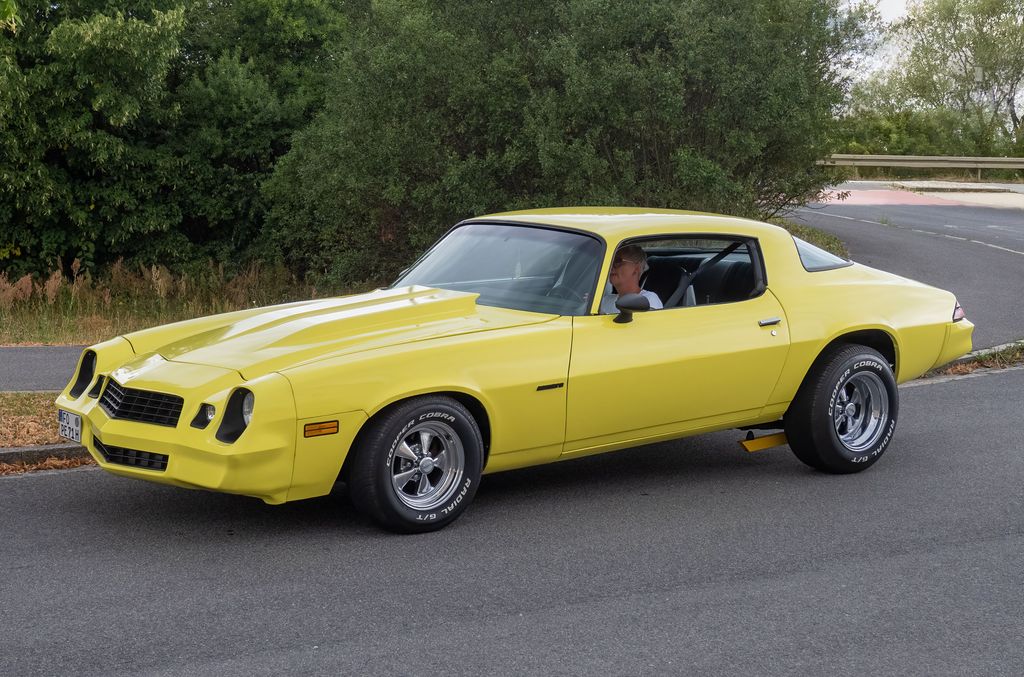
11. **Pontiac Trans Am**For Baby Boomers, the Pontiac Trans Am is an undeniable icon of performance and style, indelibly etched into popular culture through its numerous appearances in films and television shows of the 1970s and 80s, most notably the ‘Smokey and the Bandit’ movies. With its powerful V8 engines and striking design elements, including the famous ‘screaming chicken’ hood decal, the Trans Am delivered exciting performance and a bold aesthetic that captured the spirit of an era.
Millennials, however, often approach the Trans Am with a different set of expectations, frequently overlooking it due to a perceived lack of sophistication and refinement when compared to contemporary sports cars. While its raw power and iconic status are acknowledged, younger enthusiasts are often deterred by what they view as dated technology, higher maintenance costs, and a design that, while bold, may not align with modern aerodynamic and stylistic preferences.
This generational divide highlights a shift from an appreciation of raw, unapologetic muscle to a demand for a more balanced blend of performance, technological integration, and fuel efficiency. The Trans Am’s classic charm, though potent for Boomers, struggles to compete with the sleek, high-tech offerings that define modern performance vehicles, making it a powerful artifact of its time rather than a coveted daily driver for younger generations.
Car Model Information: 2024 Honda Civic Sport
Name: Pontiac Firebird
Caption: The second, third, and fourth generations of,the Pontiac Firebird Trans Am
Manufacturer: Pontiac (automobile)
Production: February 23, 1967 – August 30, 2002
ModelYears: 1967 – 2002
Class: Pony car,Muscle car
Platform: GM F platform
Related: Chevrolet Camaro
Layout: Front engine, rear-wheel-drive layout
Categories: 1970s cars, 1980s cars, 1990s cars, 2000s cars, All articles with dead external links
Summary: The Pontiac Firebird is an American automobile built and produced by Pontiac from the 1967 to 2002 model years. Designed as a pony car to compete with the Ford Mustang, it was introduced on February 23, 1967, five months after GM’s Chevrolet division’s platform-sharing Camaro. This also coincided with the release of the 1967 Mercury Cougar, Ford’s upscale, platform-sharing version of the Mustang.
The name “Firebird” was also previously used by GM for the General Motors Firebird series of concept cars in the 1950s.
Get more information about: Pontiac Firebird
Buying a high-performing used car >>>
Brand: Pontiac Model: Trans Am
Price: $25,950 Mileage: 29,727 mi.
Read more about: Boomers Cherish These 15 Classic Cars, Yet Millennials Remain Unmoved: A Deep Dive into Generational Automotive Divides
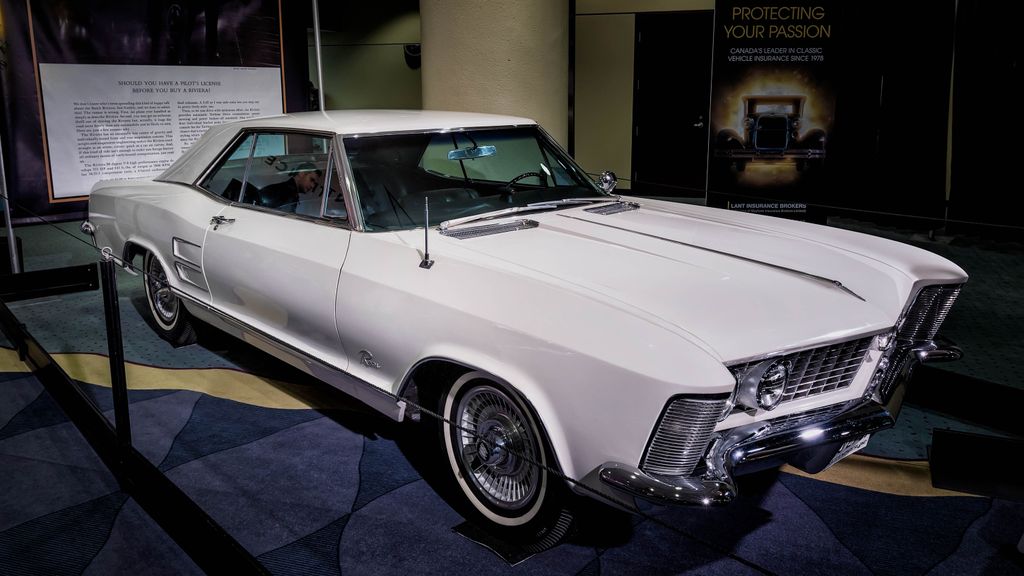
12. **Buick Riviera**The Buick Riviera, particularly its distinctive ‘boat-tail’ models of the early 1970s, is fondly remembered by Baby Boomers for its daring design and smooth, luxurious ride. It was a true status symbol, combining powerful V8 engines with a focus on comfort and a unique aesthetic that set it apart. For those who valued both performance and class, the Riviera delivered a sophisticated driving experience with vintage touches and deluxe interiors.
Conversely, Millennials often regard the Riviera as an outdated ‘gas-guzzler’ with a design that they find ‘too bold’ for their contemporary tastes. The large size, substantial fuel inefficiency, and often higher maintenance costs associated with such a classic luxury vehicle clash significantly with the practical and environmental priorities of younger buyers. The audacious styling, once a mark of daring innovation, is now often seen as an aesthetic challenge.
Despite its historical significance as a symbol of automotive luxury and design ambition, the Riviera’s practical drawbacks overshadow its classic appeal for many Millennials. While its distinctive form could attract those interested in vintage aesthetics, the realities of ownership in the modern era, particularly concerning fuel consumption and upkeep, deter a generation that seeks efficiency and understated elegance in their vehicles.
Car Model Information: 1971 Buick Riviera
Caption: 1963 Buick Riviera
Name: Buick Riviera
Predecessor: Buick Super
Manufacturer: Buick
ModelYears: 1963–1993,1995–1999
Class: Personal luxury car
Categories: 1960s cars, 1970s cars, 1980s cars, 1990s cars, All articles with specifically marked weasel-worded phrases
Summary: The Buick Riviera is a personal luxury car that was marketed by Buick from 1963 to 1999, with the exception of the 1994 model year.
As General Motors’ first entry into the personal luxury car market segment, the Riviera was highly praised by automotive journalists upon its high-profile debut. It was a ground-up design on a new GM E platform debuting for the 1963 model year and was also Buick’s first unique Riviera model.
Unlike its subsequent GM E platform stablemates, the Oldsmobile Toronado and Cadillac Eldorado, the Riviera was initially a front engine/rear-wheel drive platform, switching to front-wheel drive starting with the 1979 model year.
While the early models stayed close to their original form, eight subsequent generations varied substantially in size and styling. A total of 1,127,261 Rivieras were produced.
The Riviera name was resurrected for two concept cars that were displayed at auto shows in 2007 and in 2013.
Get more information about: Buick Riviera
Buying a high-performing used car >>>
Brand: Buick Model: Riviera
Price: $22,499 Mileage: 91,150 mi.
Read more about: Boomers Cherish These 15 Classic Cars, Yet Millennials Remain Unmoved: A Deep Dive into Generational Automotive Divides
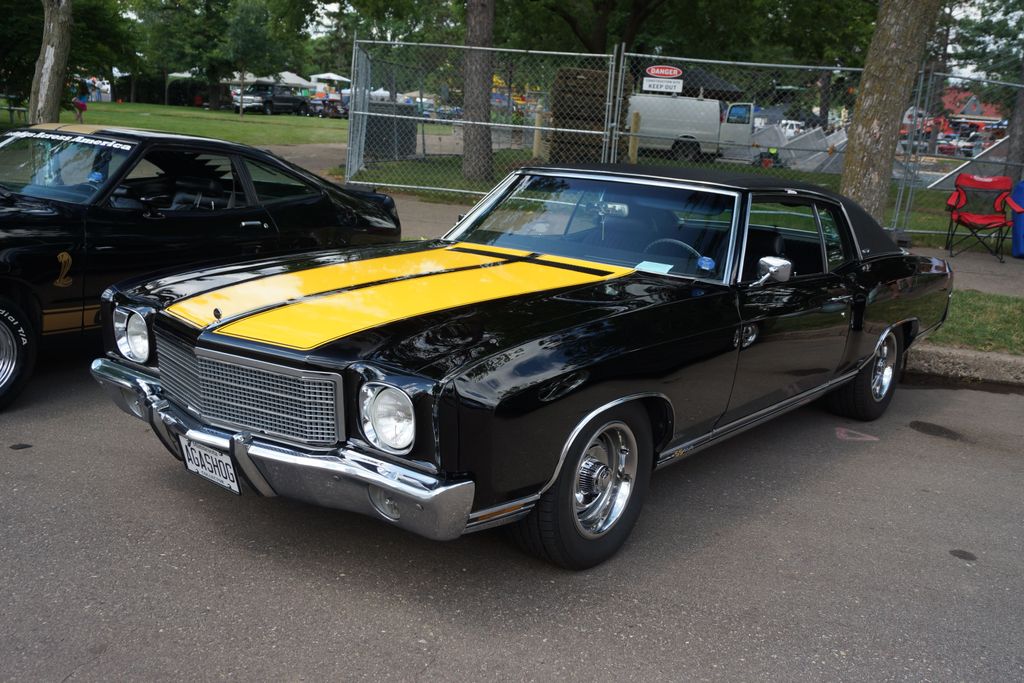
13. **Chevrolet Monte Carlo**In its heyday, the Chevrolet Monte Carlo was a celebrated personal luxury car, appreciated by Baby Boomers for its stylish design and the accessibility of its luxury. Produced from 1970 to 2007, it combined performance with a distinctive, long-hooded aesthetic and a range of powerful V8 engines. Its prominence in NASCAR history further cemented its status as a desirable vehicle for many in an older generation, representing an attainable blend of sportiness and comfort.
However, Millennials frequently criticize the Monte Carlo for its bulky size and lackluster handling, seeing it as an inefficient and somewhat unwieldy vehicle. This perception, coupled with its often poor fuel efficiency, leads to its classification as an ‘old man’s car’ by younger generations. Even its storied NASCAR legacy often does little to sway these contemporary views, as modern buyers prioritize different attributes.
For Millennials, the allure of a stylish, affordable luxury coupe from a bygone era is often overridden by practical considerations. They are drawn to more modern, fuel-efficient vehicles that offer a sleeker profile and a more dynamic driving experience. The Monte Carlo, despite its retro charm and spacious interior, struggles to align with the expectations of a generation that values agility, economy, and contemporary automotive performance.
Car Model Information: 2024 Honda Civic Sport
Name: Chevrolet Monte Carlo
Manufacturer: Chevrolet
Production: 1969–1987,1994–2007
ModelYears: 1970–1988,1995–2007
Class: Personal luxury car
BodyStyle: coupé
Layout: FR layout
Caption: 2006 Chevrolet Monte Carlo LS
Categories: 1980s cars, 1990s cars, 2000s cars, All Wikipedia articles written in American English, All articles needing additional references
Summary: The Chevrolet Monte Carlo is a two-door coupe that was manufactured and marketed by the Chevrolet division of General Motors. Deriving its name from the city in Monaco, the Monte Carlo was marketed as the first personal luxury car of the Chevrolet brand. Introduced for the 1970 model year, the model line was produced across six generations through the 2007 model year, with a hiatus from 1989 until 1994. The Monte Carlo was a variant of the Pontiac Grand Prix throughout its production.
From 1970 until 1972, the Monte Carlo rode on the unique “A-Special” platform with the Grand Prix, shifting to the standard A-body intermediate chassis from the 1973 through 1977 model years. For 1978, the Monte Carlo line underwent downsizing, but was still considered a midsized coupe. The rear-wheel drive A-body platform of this generation of Monte Carlo was redesignated as the G-body when GM’s front-wheel drive A-body cars were introduced for the 1982 model year. After an abbreviated 1988 model year, the Monte Carlo was replaced by the two-door Chevrolet Lumina.
For the 1995 model year, the Monte Carlo was revived, replacing the two-door Lumina. It shared the front-wheel drive W-platform with the two-door Grand Prix, and was the largest coupe in the Chevrolet lineup. After the 2002 model year, the Grand Prix coupe was discontinued, the Monte Carlo became the largest two-door model produced by an American auto manufacturer.
In response to declining sales of the model line, Chevrolet discontinued the Monte Carlo after the 2007 model year. During much of its production, the Monte Carlo represented the Chevrolet brand in stock car racing. During the 1980s, the Monte Carlo SS was introduced, featuring aerodynamically enhanced styling; as part of its revival, the Monte Carlo again represented Chevrolet in stock car racing from 1995 through its discontinuation.
Get more information about: Chevrolet Monte Carlo
Buying a high-performing used car >>>
Brand: Chevrolet Model: Monte Carlo
Price: $25,950 Mileage: 29,727 mi.
Read more about: Boomers Cherish These 15 Classic Cars, Yet Millennials Remain Unmoved: A Deep Dive into Generational Automotive Divides

14. **Mercury Cougar**Initially positioned as a more luxurious and refined counterpart to the Ford Mustang, the Mercury Cougar garnered significant admiration from Baby Boomers. Revered for its elegance, powerful V8 engines, and strong ‘muscle car vibe,’ it offered a sophisticated blend of performance and comfort. This vehicle was seen as a premium choice, an upgrade that brought an extra layer of style and interior appointments to the pony car formula.
Yet, for many Millennials, the Cougar is often dismissed as an ‘unnecessary deviation’ from the Mustang’s more classic and perhaps purer appeal. Younger generations tend to view it as an older generation’s car, finding its large size and fuel inefficiency to be significant drawbacks. The pursuit of luxury and a distinct identity, which defined the Cougar for Boomers, doesn’t always translate into desirability for modern buyers who prioritize different attributes.
Despite its stylish design and powerful engine options, the Cougar’s practical challenges, including higher maintenance costs and a perceived lack of modern features, limit its appeal to Millennials. While its heritage as a more upscale muscle car is historically interesting, the contemporary market’s demand for efficiency, advanced technology, and a streamlined driving experience means the Cougar struggles to capture the attention of a new generation of automotive enthusiasts.
Car Model Information: 1995 Mercury Cougar XR7
Name: Mercury Cougar
Caption: 1969 Mercury Cougar (first generation)
Manufacturer: Mercury (automobile)
Layout: Front-engine, rear-wheel-drive layout
ModelYears: 1967–1997,1999–2002
Class: Pony car,Personal luxury car,Mid-size car,Sport compact
Categories: 1960s cars, 1970s cars, 1980s cars, 1990s cars, 2000s cars
Summary: The Mercury Cougar is a series of automobiles that was sold by Mercury from 1967 to 2002. The model line is a diverse series of vehicles; though the Cougar nameplate is most commonly associated with two-door coupes, at various stages in its production, the model also was offered as a convertible and a hatchback. During its production as the mid-size Mercury line, the Cougar was also offered as a four-door sedan and five-door station wagon.
In production for 34 years across eight generations (skipping the 1998 model year), the Cougar is second only to the Grand Marquis (36 years) in the Mercury line for production longevity. 2,972,784 examples were produced, making it the highest-selling Mercury vehicle. During the 1970s and 1980s, the marketing of the Mercury division was closely associated with the Cougar, with promotional materials advertising Mercury dealers as “The Sign of the Cat” with big cats atop Lincoln-Mercury dealer signs. Cat-related nameplates were adopted by other Mercury lines, including the Bobcat and Lynx.
During its production, the Cougar was assembled at the Dearborn Assembly Plant (part of the Ford River Rouge Complex) in Dearborn, Michigan from 1967 until 1973, San Jose Assembly (Milpitas, California) from 1968 into early 1969, Lorain Assembly (Lorain, Ohio) from 1974 until 1997, and at Flat Rock Assembly (Flat Rock, Michigan) from 1999 through 2002.
Get more information about: Mercury Cougar
Buying a high-performing used car >>>
Brand: Mercury Model: Cougar
Price: $10,995 Mileage: 37,589 mi.
Read more about: Boomers Cherish These 15 Classic Cars, Yet Millennials Remain Unmoved: A Deep Dive into Generational Automotive Divides
The dynamic shift in automotive appreciation across generations underscores a broader evolution in societal values and technological progress. What was once the pinnacle of design, power, or luxury for Baby Boomers often becomes a symbol of excess, inefficiency, or dated technology for Millennials. This divergence isn’t merely about aesthetic preference; it reflects a profound re-evaluation of what makes a vehicle truly desirable, emphasizing a future where practicality, environmental responsibility, and integrated technology increasingly drive consumer choices, leaving many classic icons in the rearview mirror of younger generations.

